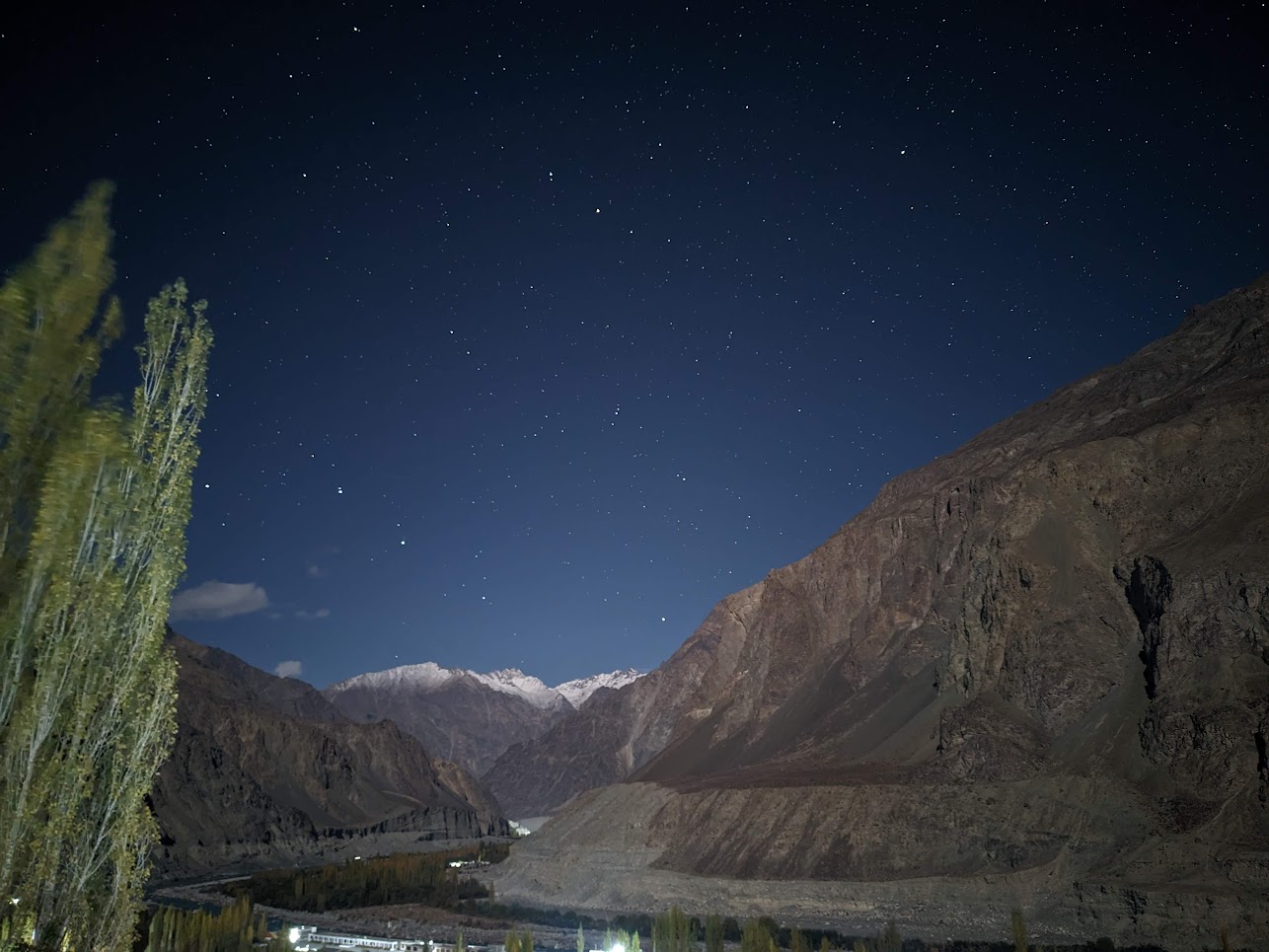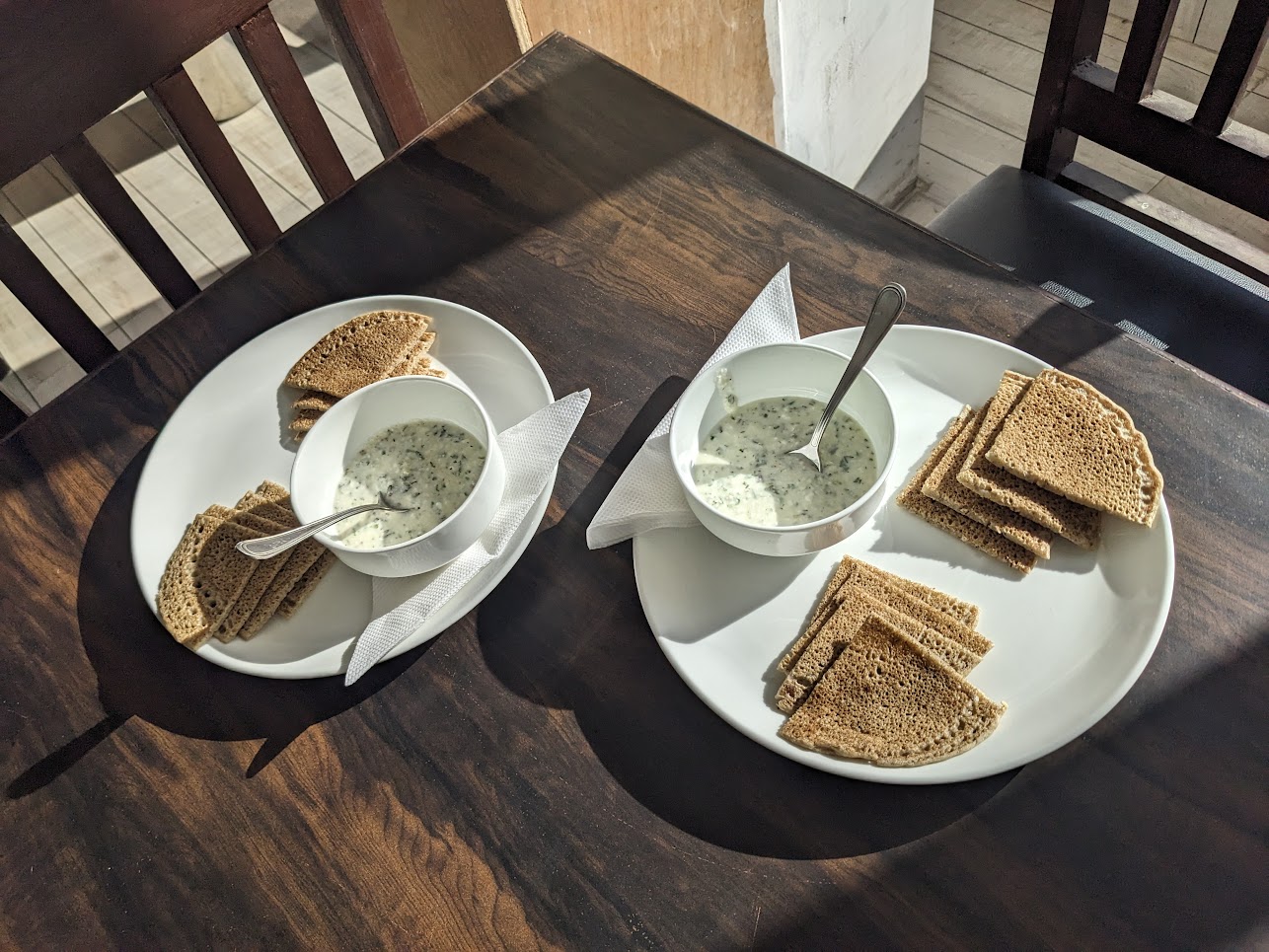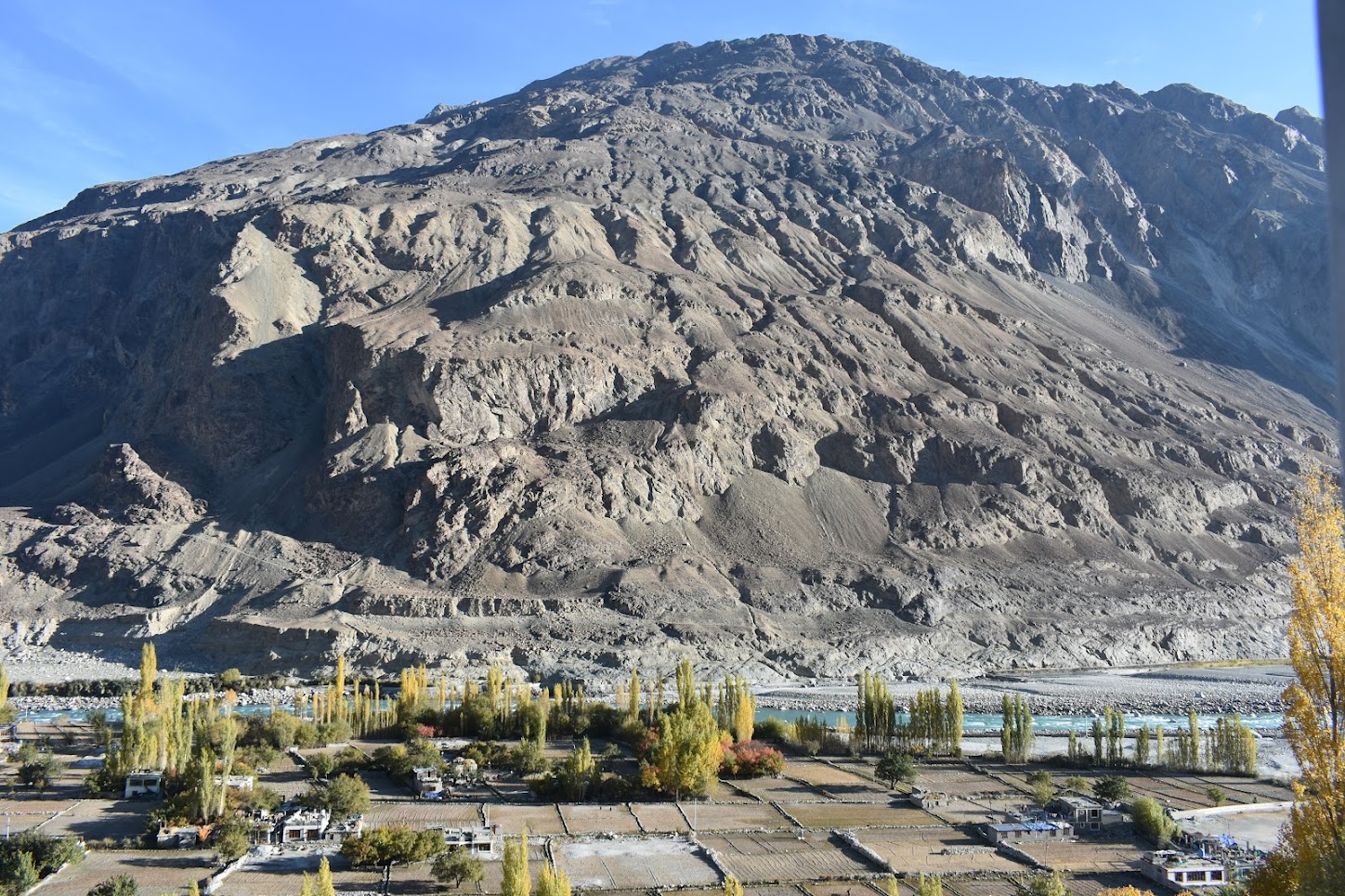"How high would that mountain be, bottom to top?" We took a stab at the height of the mountain in front of us. "Could be over a kilometer!" one of us took a wild guess. The property owner Mr. Ghulam Hussein suggests it is over three kilometers!
Climbing up to Upper Turtuk on foot had fairly tested our acclimatization. We weren't going to climb the mountain anyway. But it stands imposingly in front of the village(s) of Turtuk. On one side, we can see the place where the Karakoram range meets the Himalayas, and India meets Pakistan (Baltistan). On the other side, the valley opens up into a larger valley of Shyok and Nubra.

Mr. Hussein informs us that Turtuk has crops in both the seasons owing to its lower altitude, compared to Leh. AND, that it is one of the few places where Buckwheat grows, and that he'd treat us with a breakfast based on it. We weren't disappointed!

During the conversation, I ask about their views on being separated from Pakistan and becoming a part of India. I tell them how some elders sometimes claim wistfully (when discussing corruption) that British Raj was better than the current lot. He answers assuringly that he has never heard any of the people regret becoming a part of India.
While the tour operators in Leh suggest that Turtuk should be a day tour based out of Sumur, I think Turtuk merits an overnight stay at the very least. The Stone Palace is a cozy stay on the edge of upper Turtuk overlooking lower Turtuk, and the property owner, Mr. Hussein is a wonderful host and a story teller.

The place itself is beautiful with all the elements of Ladakh in one place - the colors of Apricot trees, Poplars, the rocky and snowy mountains, the clear blue waters, a bottomless blue sky.

And not to forget the natural cold storage site where the community owns and stores perishable items such as Yak butter in the safety of the naturally cold store. Just being outside in the area feels a few degrees colder than the surrounding areas.

